Blogs
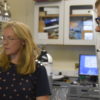
How to identify sources of methane – workshop on isotopes
If you want to know where your methane is coming from, you can measure the isotopic composition of the molecules. The isotopic composition is like a fingerprint, you can distinguish between methane coming from e.g. human activities, from cows or natural gas. It is even possible to distinguish if the natural gas is originally coming…
Read more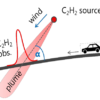
Workshop on Gaussian plume and dispersion models
Gaussian plume and dispersion models are useful tools to derive emissions rates from mobile CH4 measurements as performed within MEMO2. In October 2018, our partner Heidelberg University organised a workshop on this topic to teach theoretical basics on plume dispersion, practice the modelling, and to discuss the measurement strategy for best model use. ESRs are trained…
Read more
Sara Defratyka – AirCore: simple tool better than magical tricks
Blog written by Sara Defratyka There is a moment in each PhD’s life when students have to bring to life what they read in articles and confront expectation with reality. This moment can be a perfect occasion to test new ideas to improve daily work. For me, this opportunity came when I was on secondment in…
Read more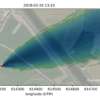
Anja Raznjevic – Modeling dispersion of methane
Blog written by Anja Raznjevic Modeling dispersion of methane (CH4) on the small scale is my main research topic and I work at Wageningen University (WUR), the Netherlands. For simulations I use Computational Fluid Dynamics (CFD) model called MicroHH, developed by Chiel van Heerwaarden et al. (for more information see http://microhh.org/), which simulates turbulent flows….
Read more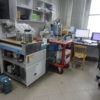
Malika Menoud – Installation of a CF-IRMS and methane extraction system
Blog written by Malika Menoud Installation of a Continuous Flow Isotope Ratio Mass Spectrometer (CF-IRMS or for us just mass spec) and methane (CH4) extraction system for continuous isotopic measurements in ambient air during 17th to 26th of May 2018, AGH University of Science and Technology, Krakow, Poland First: Time to explain what this “system” does! The idea…
Read more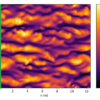
Barbara Szenasi – My research visit at Wageningen University
Blog written by Barbara Szenasi My research project is about modelling atmospheric methane (CH4) across Europe and I work at the research institution LSCE in France. During my PhD, I am supposed to visit three different institutions in order to broaden my knowledge and closely work together with other PhD students within the European MEMO2 project….
Read more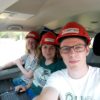
Piotr Korben – My story from 3 weeks of measruements in Poland
Blog written by Piotr Korben The European Training Network MEMO2 (www.h2020-memo2.eu) is a project where 13 PhD students cooperate to identify and calculate methane emission from different methane sources. During the 3 years of my PhD I will visit our project partners in Utrecht, Paris and Poland for scientific secondments. My secondment in Poland was between…
Read more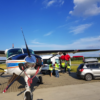
Sara Defratyka – MEMO2 at CoMet
Blog written by Sara Defratyka MEMO2 PhD students increase their skills and knowledge during the CoMet campaign in Silesia Region, Poland The European Training Network MEMO2: MEthane goes MObile – MEasurements and MOdelling, is focused on identification and evaluation methane emissions. Better understanding of methane emission is one of the crucial elements in battle with…
Read more
MEMO2 goes marine
From 22 June till 2 July MEMO2 participated in a scientific research cruise to the North Sea. We tested some new equipment, took samples for the lab and measured methane continuously. Have a look at our (almost) daily blog below from the cruise or visit the NIOZ blog for a nice summary of all activities on board….
Read more
